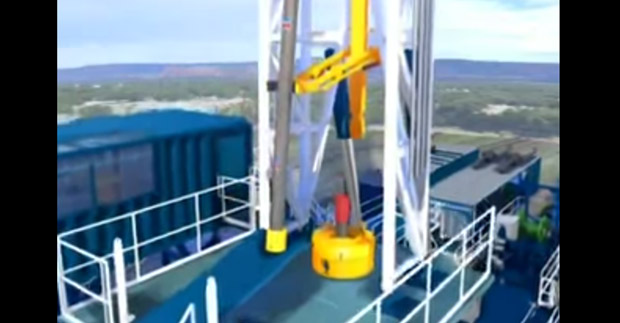
Mobile formation is caused by overburdened pressure that squeezes shale and/or salt into a wellbore. The squeezed formations reduce wellbore diameter; therefore, the drill string/BHA gets stuck due to under gauge wellbore.

Mobile Formation Causes Stuck Pipe
Warning signs when you get stuck due to mobile formation
- Salt and shale are drilled. You can see from the Mud logging samples showing shale. Moreover, Chloride content must be increased in case of drilling into salt zones.
Stuck identification for mobile formation
- Over pull, down weight and torque are suddenly increased.
- It could happen at anytime as drilling, tripping in and tripping out depending on how fast plastic formations are moved.
- Most of the time, the BHA gets stuck at the plastic zones because BHA contains the largest diameter component.
- Circulation is not restricted or is just slightly restricted.
What should you do for this situation?
- If the drill string is stuck while moving up, jar down with maximum trip load. Torque can be applied with caution while jarring down.
- If the drill string is stuck while moving down, jar up with maximum trip load without applying any torque in drill string.
- If you are sure that the plastic formations drilled are salt, you may consider spotting fresh water to dissolve the salt. However, you need to consider regarding well control issues.
Preventive actions:
- Use sufficient mud weight to hold back formation movement.
- Back ream and wiper trip should be performed across the suspected rocks.
- Minimize time for open hole exposure.
- Trip in hole with caution prior to entering possible problematic formations.
References
John Mitchell Drilbert Engineering, 2002. Trouble-Free Drilling Volume 1: Stuck Pipe Prevention. Edition. Drilbert Engineering Inc.
Fanarco.net. 1999. Stuck Pipe Prevention Self-Learning Course. [ONLINE] Available at: http://www.fanarco.net/books/drilling/stuck-pipe.pdf. [Accessed 21 June 2016
Steve Devereux, 2012. Drilling Technology in Nontechnical Language, 2d Ed.. 2 Edition. PennWell Corp.













